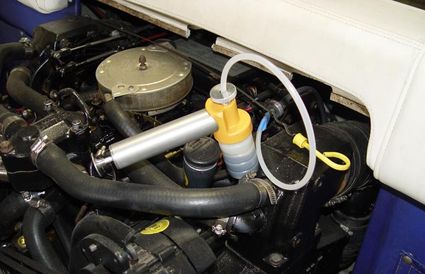Easy Does It - Boat Motor Oil Analysis Made Simple
It's easy to take an oil sample with the right gear.
February 1, 2017
A lot goes on inside a boat engine, and akin to drawing blood, and an engine oil sample analysis (OSA) can tell you a lot about the health of your boat's motor. While a single sample may not give you the whole story, an OSA creates a "baseline" that helps you look at your engine's health over time.
That's why some mechanics and surveyors recommend taking one sample every year. But what does a typical oil sample analysis include and what does it tell a boat owner or buyer? BoatUS, the nation's largest boating advocacy, services and safety group has some answers.
Most oil sample analyses will include the following:
• Spectral Exam: A spectrometer is used to find the quantity of various metals and additives in the sample – useful for finding excessive wear in bearings, pistons, rings, cylinders, valve train and gears. It also determines the composition of any oil additives.
• Viscosity Test: The thickness of the oil at a specific temperature is tested – useful for finding fuel dilution, the breakdown of viscosity enhancers or other contamination.
• Flash Point: Tests the temperature at which vapor from the oil ignites – contamination can cause a specific grade oil to flash higher or lower than the design flash point.
• Insoluables Test: Insoluables are typically abrasive solids – higher readings are usually byproducts of incomplete combustion.
An OSA typically costs about $25 by mail or at a local repair shop. If you'd like to learn how to take an oil sample or need more information, see the story "Oil Sample Analysis" by Alison Mazon in the magazine for it's insured BoatUS members, Seaworthy, at BoatUS.com/oilsampleanalysis.





Reader Comments(0)